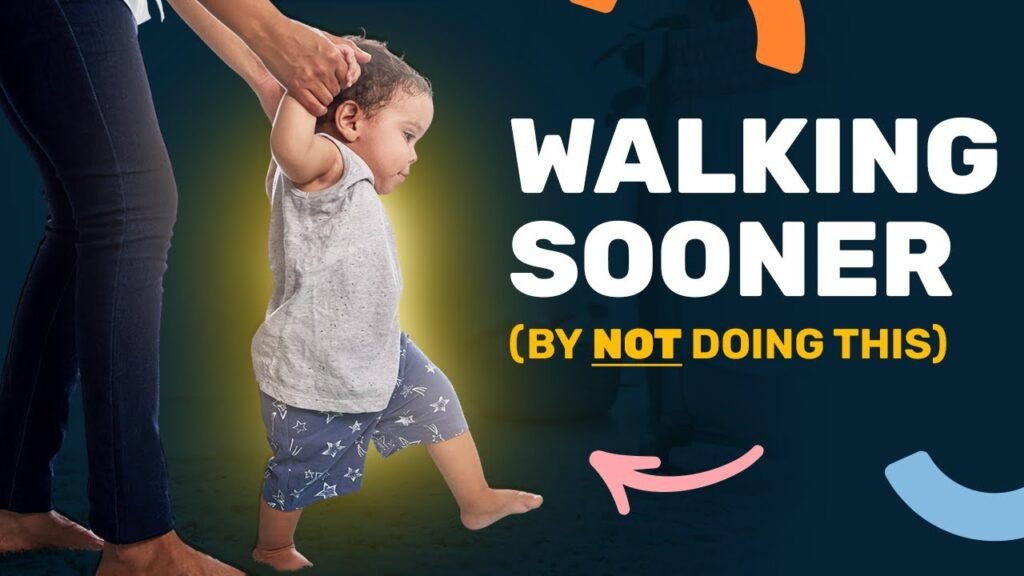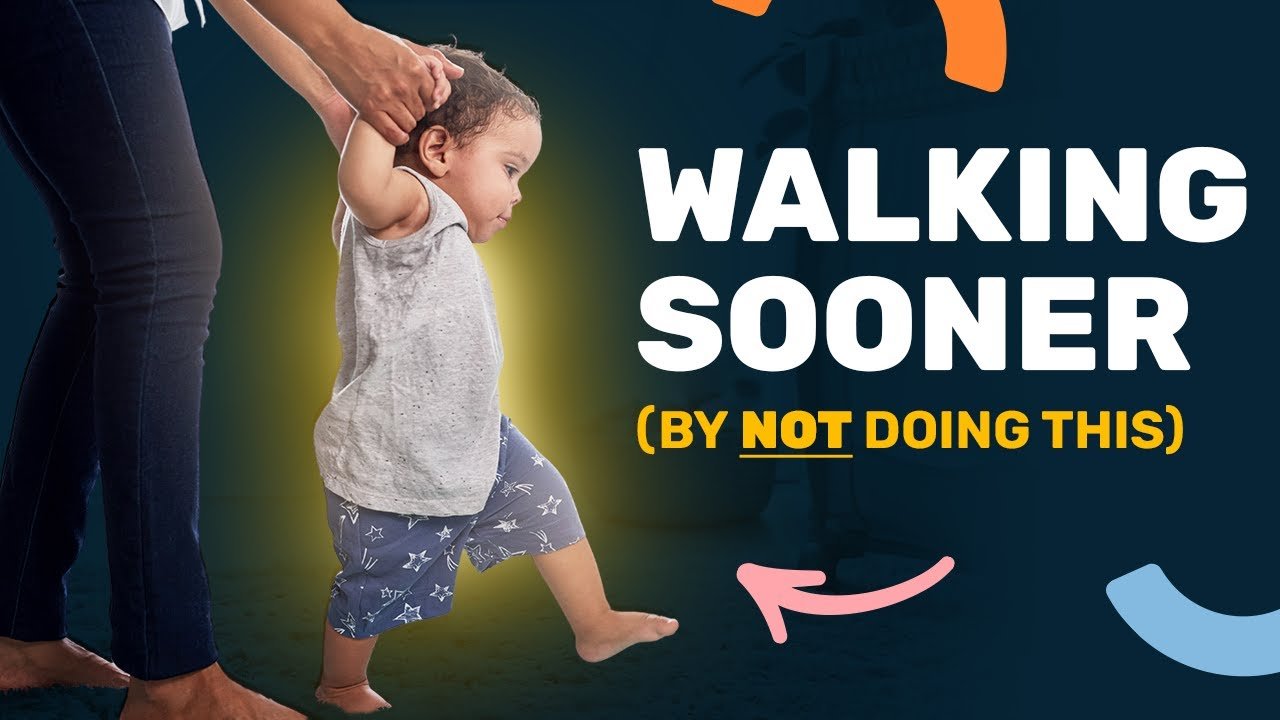Did you know that something as simple as putting socks or shoes on your baby’s feet can actually make it harder for them to learn to walk? Babies rely on sensory information from their feet to develop their walking skills, and covering their feet restricts this vital input. In fact, shoes can even delay muscle development and cause walking problems later in life. But don’t worry, there are ways to help your baby learn to walk more easily. Encouraging barefoot walking on safe surfaces and avoiding excessive hand-holding can support their natural development. And, it’s important to steer clear of baby walkers, as they can hinder a baby’s ability to walk independently and contribute to abnormal walking patterns. So, let’s dive into this article to learn more about the negative effects of baby walkers on a baby’s walking progress and discover some counterintuitive advice to get your child walking sooner.

Negative Effects of Baby Walkers
Baby walkers, although often advertised as a tool to help babies learn to walk, can actually have a number of negative effects on their development. In this article, we will explore these negative effects in detail, outlining the potential delays in walking progress, abnormal walking patterns, and lack of balance and coordination skills that can result from the use of baby walkers.
Delay in Walking Progress
One of the primary negative effects of baby walkers is a delay in walking progress. When babies rely on walkers for support and mobility, they become dependent on the device and may struggle to learn to walk independently. This dependency on support hinders their natural development and can delay the acquisition of walking skills.
Additionally, using a baby walker restricts the opportunity for babies to develop the necessary muscle strength for walking. When babies are confined to a walker, they miss out on the opportunity to engage in activities that naturally build muscle strength, such as crawling and pulling themselves up to stand. This lack of muscle development can further delay their ability to walk.
Furthermore, the use of a baby walker can lead to delayed development of motor skills. When babies rely on the support and mobility provided by a walker, they miss out on the opportunity to explore their environment and practice independent walking. This limited exploration can hinder the development of motor skills necessary for independent walking.
Dependency on Support
Another negative effect of baby walkers is the dependency it creates on support. Baby walkers provide partial weight support, allowing babies to stand and move with less effort. While this may seem helpful, it actually prevents babies from fully engaging their muscles and developing the necessary strength for independent walking.
Additionally, the use of a baby walker inhibits babies from finding their own balance. With the support of the walker, babies do not need to engage their core muscles and make the necessary adjustments to maintain balance. This lack of balance development can further delay their ability to walk independently.
Lack of Muscle Development
Using a baby walker can also lead to a lack of muscle development in babies. When confined to a walker, babies have restricted movement and limited opportunities to engage in activities that promote the growth of muscles required for walking. This restricted movement prevents babies from building muscle strength and can delay their ability to walk.
Furthermore, the delayed muscle development caused by the use of a baby walker can result in weaker muscles overall. Without the opportunity to engage in activities that naturally strengthen muscles, such as crawling and pulling themselves up to stand, babies may lack the necessary muscle strength to support their bodies and take independent steps.
Delayed Motor Skills
Another negative effect of baby walkers is a delay in the development of motor skills. When babies rely on the support and mobility provided by a walker, they miss out on the opportunity to practice independent walking. This lack of practice can lead to a delay in the acquisition of motor skills necessary for walking, such as balance, coordination, and the ability to take independent steps.
Without the opportunity to explore their environment and practice independent walking, babies may struggle to develop the motor skills necessary for independent walking. This delayed development can have long-term effects on their overall physical development and may impact their ability to participate in activities that require mobility and coordination.
Abnormal Walking Patterns
Using a baby walker can also contribute to the development of abnormal walking patterns in babies. The design of a baby walker encourages babies to move their feet in a different way than they would when learning to walk naturally. Instead of the heel-to-toe motion that promotes a natural and stable gait, babies in walkers tend to propel themselves forward using their toes. This toe-first motion can lead to the development of abnormal walking patterns, such as walking on their toes.
Furthermore, the use of a baby walker can contribute to incorrect foot placement. When babies are confined to a walker, their feet may not be able to make proper contact with the ground, resulting in improper weight distribution. This improper weight distribution can lead to issues such as uneven pressure on the feet and hyperextension of the legs.
Improper Weight Distribution
One of the negative effects of improper weight distribution resulting from the use of a baby walker is uneven pressure on the feet. Babies in walkers may not be able to distribute their weight evenly, leading to excessive pressure on certain areas of the feet. This uneven pressure can cause discomfort and potentially lead to foot and leg issues later in life.
Additionally, improper weight distribution can result in the hyperextension of the legs. Babies in walkers often rely on their toes to move forward, which can cause their legs to straighten excessively. This hyperextension of the legs can put strain on the muscles and joints, potentially leading to long-term issues with mobility and posture.
Incorrect Foot Placement
Another negative effect of using a baby walker is incorrect foot placement. Babies in walkers may adopt a walking style known as toes-walking, where they walk on their toes instead of placing their heels on the ground first. This incorrect foot placement can lead to an abnormal walking pattern and may cause difficulties in balance and coordination.
Furthermore, the use of a baby walker can impair proper heel-to-toe movement. When babies are restricted to a walker, they may not have the opportunity to practice the natural movement of placing their heel on the ground first, followed by their toes. This impaired heel-to-toe movement can hinder the development of a natural walking pattern and may impact overall mobility.
Lack of Balance and Coordination Skills
Finally, the use of baby walkers can result in a lack of balance and coordination skills. When babies rely on the support and mobility provided by a walker, they do not have to actively engage their core muscles or make the necessary adjustments to maintain balance. This lack of balance development can lead to difficulties in walking independently and may impact overall coordination skills.
Additionally, the use of a baby walker limits babies’ sensory experience. When babies are in a walker, they are not able to fully engage their senses and develop a comprehensive understanding of their environment. This limited sensory experience can hinder the development of balance and coordination skills required for independent walking.
Conclusion
In conclusion, the use of baby walkers can have a number of negative effects on a baby’s development. These negative effects include delays in walking progress, abnormal walking patterns, and a lack of balance and coordination skills. To promote healthy and natural development, it is important to encourage barefoot walking, discourage excessive support such as hand-holding, and avoid the use of baby walkers. By prioritizing the development of muscle strength, balance, and coordination, babies can learn to walk independently and thrive in their physical development.

